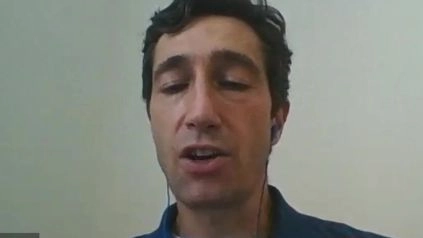Daniel Becker MD at NYU Langone discusses an ASCO 2020 abstract entitled Exploring the Cancer Genome Atlas (TCGA) for the molecular profile of young onset colorectal cancers.
Background:
The incidence and mortality of colorectal cancer ( CRC) has been decreasing, partially due to increased screening implementation, but the incidence among patients under 50 (young onset, YO) is increasing at a rate of 2 percent per year. The cause of this growing occurrence is still poorly understood, but variations in mutation profiles may help to explain pathogenesis, prognosis and identify therapy targets.
Approaches:
For 488 TCGA CRC patients, genomic and clinical data were used to determine variations in genetic mutations between YOs and patients over 50 years old. To evaluate variations in somatic mutation frequency in essential pathways involved in CRC, chi-squared tests have been used: DNA MMR, P53, WNT, RAS-MAPK, PI3K / AKT / mTOR, and TGF-B pathways. Proteomic data through RPPA was also available and analyzed for 85 of the patients.
Reviews:
The mean age of patients included was 66 (SD 12.8). At the time of diagnosis, 76 (12.2 percent) were under 50 years old. There were no discrepancies in microsatellite instability, histologic form (adeno or mucinous), position (colon or rectal), tumor size, or metastasis when compared YO with those over 50. Nodal involvement (p = 0.007) and a higher histologic rating (p = 0.022) were more probable for YO patients. The MMR pathway (43 percent vs 23 percent, p = 0.002) and the PI3K / AKT / mTOR pathway (70 percent vs 54 percent, p = 0.024) mutations were more probable in YO patients. Specifically, YO was more likely to have MSH2 (7% vs. 1%, p = 0.001), MSH6 (24% vs. 7%, p = 0.000); ATM (46% vs. 30%, p = 0.015); FZD10 (7% vs. 2%, p = 0.007); ERBB2 (15% vs. 7%, p = 0.027); PIK3R1 (20% vs. 9%, p = 0.014), PTEN (61% vs. 35%, p = 0.000) and TGFBR2 (13% vs. 0.000) mutations. YO was more likely to have decreased expression of MSH2 (p = 0.003) and MSH6 (p = 0.005) when looking at proteomic results.
Conclusions:
Somatic mutations in genes involved in the MMR pathway and the PI3K / AKT / mTOR pathway are more common in patients with YO CRC. MSH2, MSH6, ATM, FZD10, ERBB2, PIK3R1, PTEN and TGFBR2 in particular. Important differences were only seen in the expression of MSH2/6 when integrating proteomic results. Some of these genes (e.g. ERBB2 / HER2) are targets for current therapies, and others as future therapeutic targets are being actively investigated. The establishment of variations in tumor genetic profiles is a first step in recognizing the rise in YO CRC and the identification of therapy targets at the same time. However, due to post-transcriptional modifications (e.g. RNAi, methylation), genetic profiling alone can not accurately determine variations in protein expression, and thus targets for therapy.

